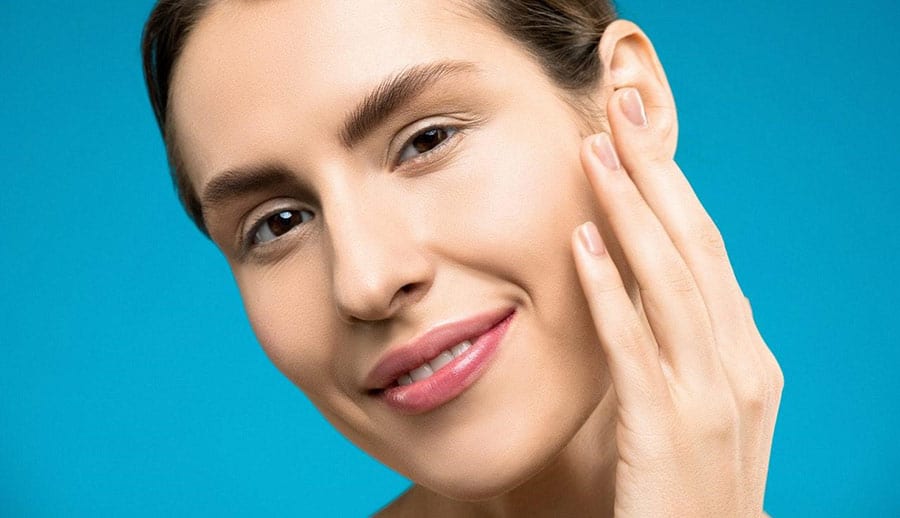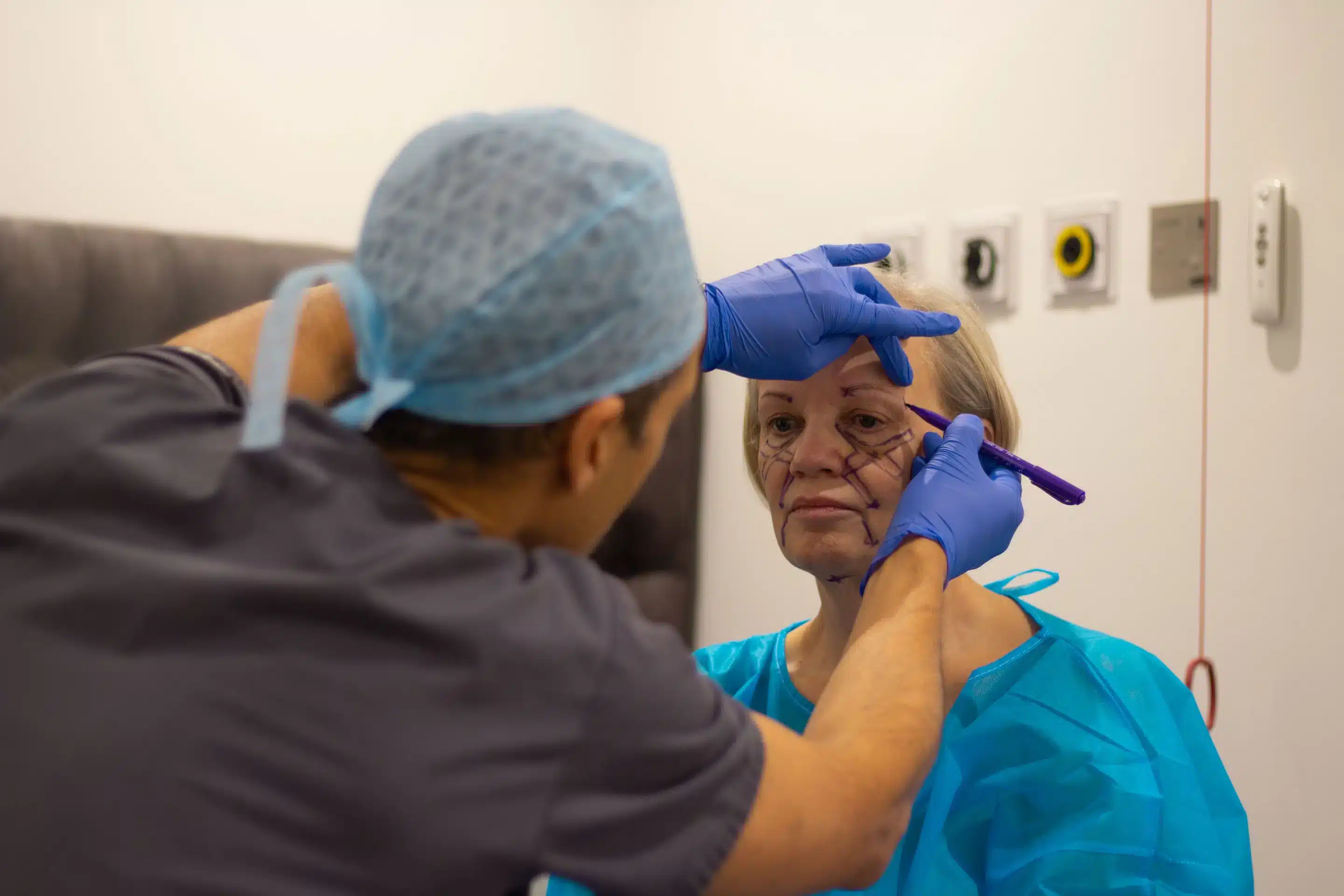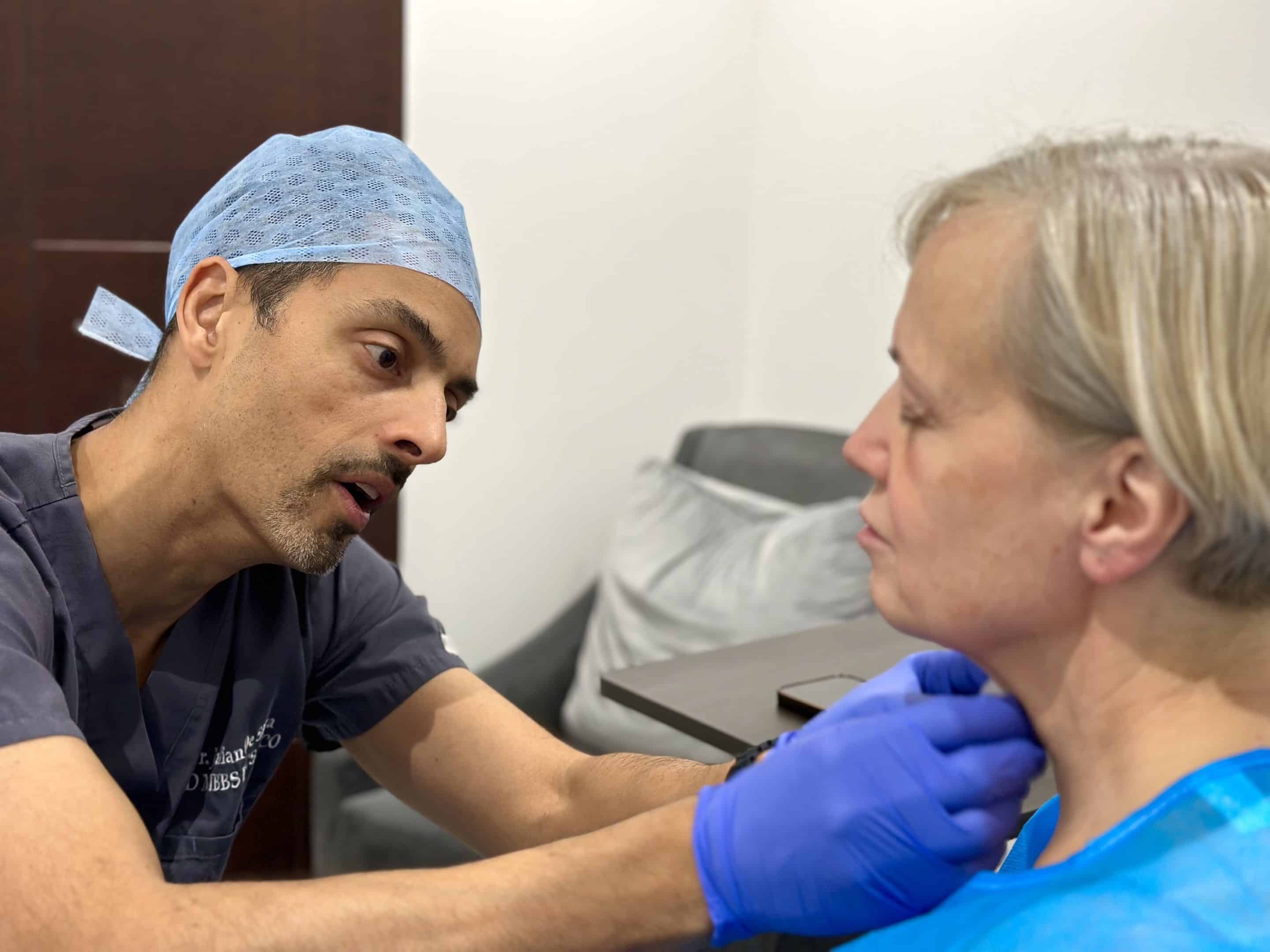Knowing how long does a facelift last lets you make an informed decision about the treatment.
Do you get disturbed by the fine lines, wrinkles, and sagging skin on your face? Do you feel like your skin is ageing too fast? A facelift can help.
If you have been wanting a facelift, you likely asked the question, “How long does a facelift last?”
In this article, we will talk about the types of facelifts, how long does a facelift last, the importance of aftercare, and how to choose the right doctor for the treatment.
What Is a Facelift?
A facelift is a surgical procedure that tightens and smoothens your skin.
As its name implies, a facelift is a treatment that lifts your face. Cosmetic surgeons perform facelifts to improve their patients’ skin.
Facelifts are also a well-known anti-ageing treatment. They can get rid of fine lines, wrinkles, and sagging skin among others.
Thousands of men and women have had facelifts all over the globe. This shows how effective and safe the treatment is, given that it is performed by a highly qualified cosmetic surgeon.
My clinic offers facelift surgery. Also known as rhytidectomy, patients all over the world, including celebrities, have come to my clinic to get the said treatment.
Types of Facelifts
Types of facelifts include deep plane facelift and mini face lift.
Thanks to advances in cosmetic medicine, you can now choose from several types of facelifts. The following are the most common types of facelifts:
1. Signature Deep Plane Facelift
The most advanced type of facelift, a signature deep plane facelift involves releasing the muscles underneath the skin.
Due to its complexity, a signature deep plane facelift can only be performed by less than 5% of plastic surgeons. I am one of those cosmetic surgeons.
My clinic offers a holistic approach to deep plane facelifts, considering both the technical and artistic aspects of the treatment.
Interestingly, a signature deep plane facelift provides more natural and subtle results compared to other kinds of facelifts. Some facelift surgeons even state that a signature deep plane facelift is typically better than a traditional one in terms of providing excellent and long-lasting results.
My signature deep plane facelift also takes into account the Golden Ratio, a universal standard of beauty. This mathematical formula has been used by artists and scientists to determine the beauty of anything― from faces to objects.
2. Skin-Only Facelift
Also known as the cutaneous facelift, a skin-only facelift only lifts the skin. Hence, the procedure does not involve the tissues underneath the skin.
This kind of facelift uses traditional techniques. Many patients who prefer this type of facelift do so because the procedure does not disturb the muscles.
Furthermore, a skin-only facelift involves making a long incision along the hairline, so the cosmetic surgeon can tighten and smoothen the facial skin.
Contrary to popular belief, a skin-only facelift can be done on younger patients. In fact, skin-only facelifts work best on younger patients because ageing hasn’t extremely affected their faces yet.
In addition, a skin-only facelift produces quick results. This satisfies patients who want to see immediate results.
The procedure also causes the least pain out of the types of facelift features in this article. This makes recovery short as well.
3. SMAS Facelift
SMAS stands for superficial muscular aponeurotic system. As its name suggests, this kind of facelift fixes the said area (the lower two-thirds of the face lying on the SMAS). This makes the SMAS facelift a type of lower facelift.
In case you have been wondering, the SMAS is found deep within the skin and subcutaneous tissue. As one of the most crucial structures for the face, modifying the SMAS can improve your appearance.
However, as you age, your SMAS becomes less elastic. This results in the sagging of your cheeks. You also become more vulnerable to getting fleshy jowls and a double chin because of this.
An SMAS facelift involves tightening the muscles, trimming excess skin, and removing fat. By doing this, an SMA facelift can hamper the skin ageing process.
Moreover, an SMAS facelift is less invasive than a regular facelift. In a nutshell, an SMAS facelift can rectify hollow cheeks, fleshy jowls, a sagging midface, and a double chin.
4. Mini Facelift
A mini face lift is a modified version of a traditional facelift. The only difference is that a mini facelift only involves small incisions.
Given this, a mini facelift typically produces less dramatic results compared to a regular facelift.
A mini facelift primarily targets the lower half of the face. A cosmetic surgeon makes small incisions around the hairline to get rid of sagging skin and lift the skin on the lower half of the face.
The process also involves removing excess skin. This can help reduce wrinkles and tighten the skin.
In some cases, a mini face lift can be done with other procedures such as brow lift surgery or eyelid surgery.
Since mini facelifts in London involve small incisions, it often produces fewer and milder side effects.
5. S-Lift
The procedure does exactly what it says: an S-shaped incision.Facelift surgeons make the said incision on the hairline. The incision then continues to the front and at the back of the ear.
After the cosmetic surgeon makes the S-shaped incision, tissues will be repositioned and excess fat and skin will be removed.
Also known as an S-facelift, this procedure also removes the skin from the midface. It also involves folding the SMAS (superficial muscular aponeurotic system).
The procedure lasts for about 2 hours. You may experience discomfort after the procedure. However, this discomfort is usually minor and therefore tolerable.
S-lift can be done to both younger and older patients. However, just like the aforementioned mini facelift, an S-lift works best on younger patients.
In addition, an S-lift is a less invasive procedure and therefore has fewer risks involved, as well as a shorter recovery time.
6. MACS Facelift
MACS stands for minimal access cranial suspension. As its name suggests, this kind of facelift involves the said area.
The procedure targets the underlying muscles of the face to soften one’s mid-facial features and reduce signs of ageing such as wrinkles and sagging skin.
A MACS facelift involves making incisions from the hairline then down to the front of the ears where facial muscles are tightened. In some cases, a cosmetic surgeon has to separate skin from the soft tissue. In many cases, facelift surgeons remove some skin.
Just like a mini facelift and S-lift, a MACS facelift works best on younger patients experiencing early signs of facial ageing. They also work well on patients with limited skin sagging.
Side-by-Side Comparison of the Types of Facelifts
Knowing the benefits of each kind of facelift lets you find out the best one for you.
Being aware of the different kinds of facelifts helps you understand the procedures and benefits they offer.
Always remember that each face is unique. The best type of facelift is the one most suitable for you after an extensive assessment. If you need help making an extensive assessment of your face, contact me now.
To properly compare the different types of facelifts, here is a side-by-side comparison of the facelifts mentioned above:
| Recovery Time | Ideal Age | Pros | Cons | |
| Deep Plane Facelift | 2 to 3 weeks | 40s to 60s | More natural look, exceptional & long-lasting results | Bruising, swelling, & bleeding |
| Skin-Only Facelift | 1 to 2 weeks | 30s to 40s | Less invasive, visible fast results | Bruising, swelling, & bleeding |
| SMAS Facelift | 3 to 8 weeks | 40s to 60s | Less invasive | Bruising, swelling, bleeding,& longer period of wound healing |
| Mini Facelift | 1 to 3 weeks | Late 30s to 40s | Less invasive, & mild side effects | Bruising, swelling, bleeding, & scarring |
| S-Lift | 3 to 5 days | Late 30s to 60s | Fast recovery period, more natural look, less scarring, lower risks | Bruising, swelling, & bleeding |
| MACS Facelift | 2 to 3 weeks | 30s to 60s | Short surgery time, minimal side effects, & fast recovery period | Bruising & swelling |
What Makes Each Type of Facelift Unique?
Knowing what makes each kind of facelift unique lets you find out the best one.
Now that you know the main differences between the types of facelifts, it’s time to know what makes each type unique.
● Deep Plane Facelift
The involvement of the Golden Ratio makes my signature deep plane facelift unique. . As the most advanced type of facelift, its other unique feature is that less than 5% of plastic surgeons can perform it.
● Skin-Only Facelift
Not disturbing or altering the muscles makes the skin-only facelift unique. Its shorter recovery time also makes it stand out from other kinds of facelifts. Also, most patients getting skin-only facelifts are young.
● SMAS Facelift
An SMAS facelift targets a specific system, unlike other types of facelifts. This makes the said facelift unique. By adjusting one of the most crucial parts of one’s facial structure, an SMA facelift can produce dramatic results.
● Mini Facelift
A mini facelift involves small incisions around the hairline. This makes this type of facelift unique. Additionally, a mini facelift produces the least noticeable scar out of all types of facelifts.
● S-Lift
As you may well know, an S-lift focuses more on the shape of the incision. This is the only kind of facelift that involves a specific shape for the incision used.
● MACS Facelift
A MACS Facelift mainly focuses on the underlying muscles of the face, rather than the skin. The cosmetic surgeon tightens the said muscles, making this procedure unique.
Best Aftercare Practices According to Each Facelift Type
Knowing the best aftercare practices according to each kind of facelift helps maintain your look.
Here are the best aftercare practices according to each facelift type:
Deep Plane Facelift
Immediately after the treatment
- Compressive garments and drains worn continuously for 1 week
One to 14 days after the treatment
- Turn your head by moving your shoulders, not your neck
- Limit moving your jaw
- Take medication as prescribed by your doctor
Skin-Only Facelift
One to 14 days after the treatment
- Turn head by moving shoulders, not the neck
- Limit moving your jaw
- Take medication as prescribed by your doctor
Three weeks after treatment and beyond
- You can resume light exercise three weeks after your facelift
- You can resume strenuous activity after six weeks
SMAS Facelift
Immediately after the treatment
- Your face must be wrapped using a post-op garment
- You must continuously wear the said garment for one week
One to seven days after the treatment
- Avoid making expressive facial movements
- Light activities can be resumed after three days
- Use your shoulders to turn your head
- Your stitches can be removed after seven days
- Take medication as prescribed by your doctor
Mini Facelift
One to seven days after the treatment
- Your bandages can be removed after two to three days
- Take medication as prescribed by your doctor
MACS Facelift
One day after the treatment
- After the operation, try to stay in an upright position for 24 hours
- Avoid any unnecessary strain on the face
One to seven days after the treatment
- Rest in an upright position whilst avoiding movement in the neck
- Use ice packs to reduce swelling
- Avoid smoking and exposure to secondhand smoke
Importance of Aftercare and Maintenance
How long does a facelift last varies from one patient to another.
In order to take advantage of the effects of your facelift, you must pay close attention to your recovery.
Complications from facelift surgery do not occur frequently, as long as you work with a highly qualified cosmetic surgeon.
However, any surgery comes with risks. This is why it is crucial for you to closely follow any aftercare and maintenance instructions provided by your surgeon.
Speaking of maintenance, you must also use high-quality creams and other over-the-counter products to maintain the effects of your facelift.
Additionally, you must develop habits to keep your skin young-looking and healthy. These habits include cleaning your face properly, eating a balanced diet, getting enough sleep, and exercising.
Taking care of your body’s overall health on top of taking care of your skin will help you look your best and maintain the results of your facelift.
How Long Does a Facelift Last?
There is no universal answer to the question, “How long does a facelift last?”
Facelift longevity has always been a popular topic among cosmetic surgeons and patients. After all, knowing how long does a facelift last helps patients make informed decisions about the treatment.
As much as I’d like to give you an exact answer to how long does facelift last, I cannot. It’s because facelift longevity varies from one person to another.
For some patients, the results of facelifts can last for a lifetime. In some cases, the results last for a decade. For others, the results last for less than a decade.
But what makes the results of a facelift longer?
One important factor is proper care and follow-up consultations. Based on my experience, patients who properly take care of their skin and overall health enjoy longer-lasting results.
The same applies to patients who get follow-up consultations. Aside from enjoying longer-lasting results, these patients also become aware of what to do after the surgery and how to correct mistakes, if any.
Importance of Consultations After a Facelift
You must have follow-up consultations to maintain your new look.
Follow-up consultations are important for many reasons.
For one, you might need a follow-up consultation to correct any issues that may arise from your first surgery. You may also need follow-up consultations if you are not satisfied with the results of your facelift.
However, please keep in mind that it may take many weeks or even months before you can see the final results of a facelift. Make sure to give yourself enough time to heal from your facelift surgery before you evaluate the results.
By doing this, you can accurately assess your new appearance.
In addition, your doctor must actively ensure the best aftercare and your satisfaction with the results. Hence, your doctor must tell you to show up to follow-up consultations.
To help you with aftercare, here are some things to ask your cosmetic surgeon during your follow-up consultations:
- How long does a facelift last
- How long will your new appearance last
- When should you begin considering follow-up cosmetic treatments
- When should you think about getting complementary procedures such as rhinoplasty and brow & forehead lift
- Is it necessary to have a facelift done again in your lifetime
These are just some of the things you can ask your cosmetic doctor. Feel free to ask any other questions, as long as you feel that they will help you understand how to make the most out of your facelift.
Remember, it is important to comfortably discuss every question and concern you have with your cosmetic surgeon. You got a facelift to improve your life and your look, so please don’t back down from getting the results you wanted.
Conclusion
A facelift can change your life. When you see how a facelift can transform your life, how much is a facelift won’t matter a lot. Plus, you will realize that a facelift is one of the best investments you can make.
Want to know more about facelifts? Check out our Patient’s Guide to Facelift Surgery to learn more about the facelift surgery process. And if you need an expert surgeon who will give proper aftercare and maintenance of your facelift, contact us now.













